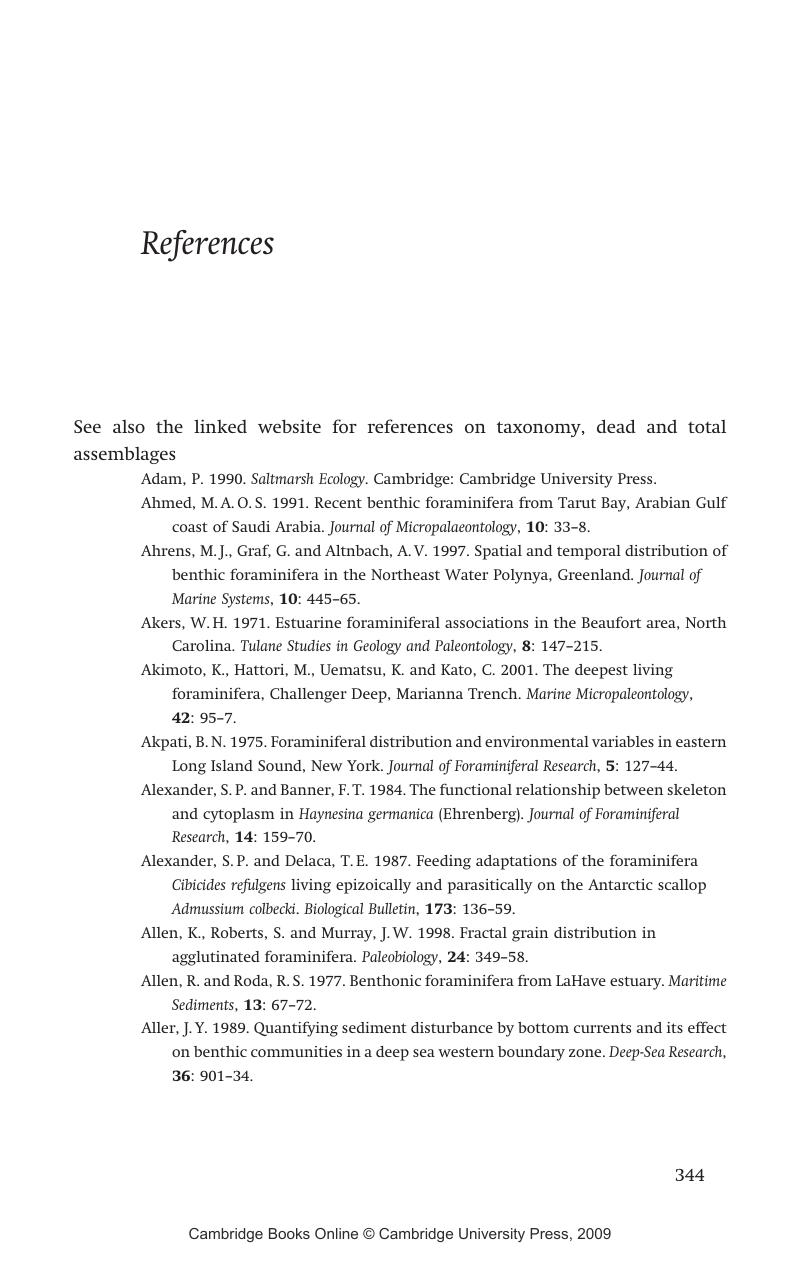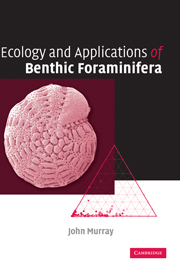Book contents
- Frontmatter
- Contents
- Preface
- 1 Introduction
- 2 Methods
- 3 Aspects of biology and basic ecology
- 4 Marginal marine environments
- 5 Shelf seas
- 6 Carbonate environments
- 7 Deep sea
- 8 Summary of living distributions
- 9 Taphonomic processes: formation of dead and fossil assemblages
- 10 Applications
- Glossary
- Appendix
- References
- Taxonomic Index
- General Index
- References
References
Published online by Cambridge University Press: 12 August 2009
- Frontmatter
- Contents
- Preface
- 1 Introduction
- 2 Methods
- 3 Aspects of biology and basic ecology
- 4 Marginal marine environments
- 5 Shelf seas
- 6 Carbonate environments
- 7 Deep sea
- 8 Summary of living distributions
- 9 Taphonomic processes: formation of dead and fossil assemblages
- 10 Applications
- Glossary
- Appendix
- References
- Taxonomic Index
- General Index
- References
Summary

- Type
- Chapter
- Information
- Ecology and Applications of Benthic Foraminifera , pp. 344 - 411Publisher: Cambridge University PressPrint publication year: 2006



